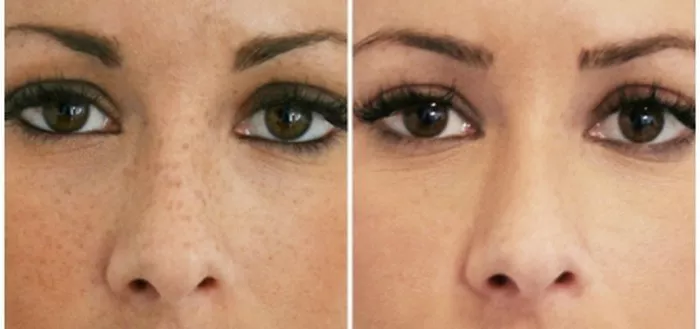Freckles are common skin blemishes that appear as small, brown spots on the skin. While most freckles are harmless, some can be a sign of skin cancer. In this article, we will explore what freckles are, the different types of freckles, and how to determine if a freckle is cause for concern.
What are Freckles?
Freckles are small, flat, brown spots that appear on the skin. They are caused by an increase in melanin production in the skin, which is triggered by exposure to sunlight. Freckles are most commonly found on the face, arms, and shoulders, and are more common in people with fair skin.
Types of Freckles
There are two main types of freckles: ephelides and lentigines.
Ephelides: These are the most common type of freckles. They are small, flat, and light brown in color. Ephelides tend to fade in the winter months and become more prominent in the summer months.
Lentigines: These are larger and darker than ephelides. They are more common in older individuals and are not affected by changes in sunlight exposure.
Identifying a Bad Freckle
While most freckles are harmless, some can be a sign of skin cancer. It is important to monitor your freckles and to look for any changes in size, shape, or color. The following are signs that a freckle may be cause for concern:
Asymmetry: One half of the freckle does not match the other half.
Border: The edges of the freckle are irregular, scalloped, or poorly defined.
Color: The freckle is not a uniform color and may include shades of brown, black, or tan.
Diameter: The freckle is larger than 6 millimeters in diameter.
Evolution: The freckle has changed in size, shape, color, or elevation.
Monitoring Your Freckles
It is important to monitor your freckles and to look for any changes that may indicate skin cancer. The following are tips for monitoring your freckles:
Use a mirror to examine your freckles regularly.
Take note of the size, shape, and color of your freckles.
Look for any changes in your freckles, such as growth or changes in color.
See a dermatologist if you notice any changes in your freckles.
Treatment for Bad Freckles
If a freckle is determined to be cancerous, treatment may include surgical removal of the freckle and surrounding tissue. In some cases, radiation therapy or chemotherapy may also be necessary.
Prevention of Freckles
While freckles cannot be prevented entirely, there are steps you can take to reduce your risk of developing freckles:
Wear protective clothing, such as hats and long-sleeved shirts, when spending time in the sun.
Use a broad-spectrum sunscreen with an SPF of at least 30.
Avoid tanning beds and sunlamps.
Seek shade when spending time outdoors.
Conclusion
Freckles are common skin blemishes that are caused by an increase in melanin production in the skin. While most freckles are harmless, some can be a sign of skin cancer. It is important to monitor your freckles and to look for any changes that may indicate skin cancer. If you notice any changes in your freckles, it is important to see a dermatologist. By taking steps to prevent freckles and monitor your skin, you can reduce your risk of developing skin cancer and maintain healthy, beautiful skin.
FAOs
1. How do you know if a freckle is bad?
It’s essential to monitor your freckles for any changes in size, shape, color, or texture. Signs that a freckle may be concerning include asymmetry, irregular borders, multiple colors, diameter larger than a pencil eraser, and evolving characteristics. If you notice any of these changes, consult a dermatologist promptly.
2. What does a normal freckle look like?
A normal freckle is typically small, flat, and brown in color. It appears as a cluster of concentrated pigment on the skin’s surface and is usually harmless. Normal freckles may darken with sun exposure and lighten during the winter months.
3. How do you know if a freckle is malignant?
A freckle may be malignant, or cancerous, if it exhibits irregular characteristics such as asymmetry, uneven borders, multiple colors, a diameter larger than a pencil eraser, and changes over time. It’s crucial to have any suspicious freckles evaluated by a dermatologist through a skin examination or biopsy.
4. What is the rarest spot for a freckle?
While freckles can appear on any part of the body exposed to sunlight, including the face, arms, and shoulders, the palms of the hands and soles of the feet are among the rarest spots for freckles to develop. Freckles on these areas may indicate excessive sun exposure or a genetic predisposition to freckling.


